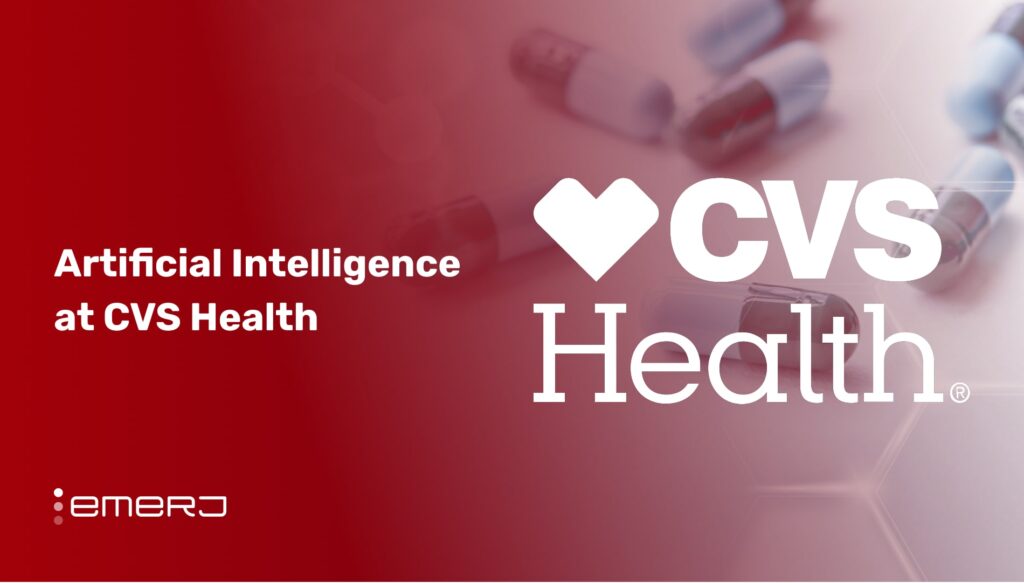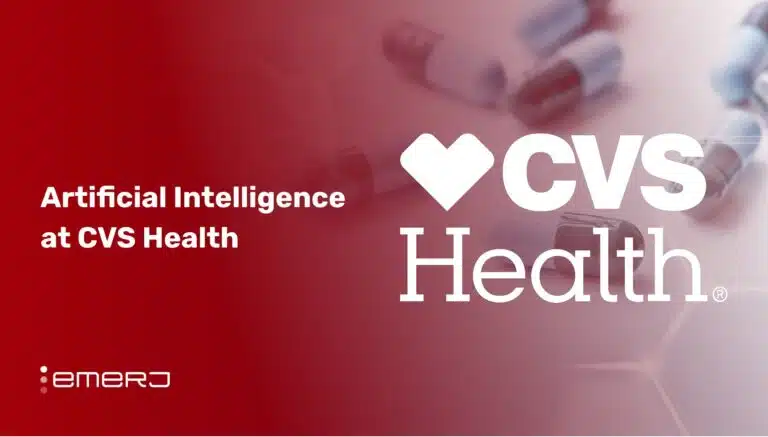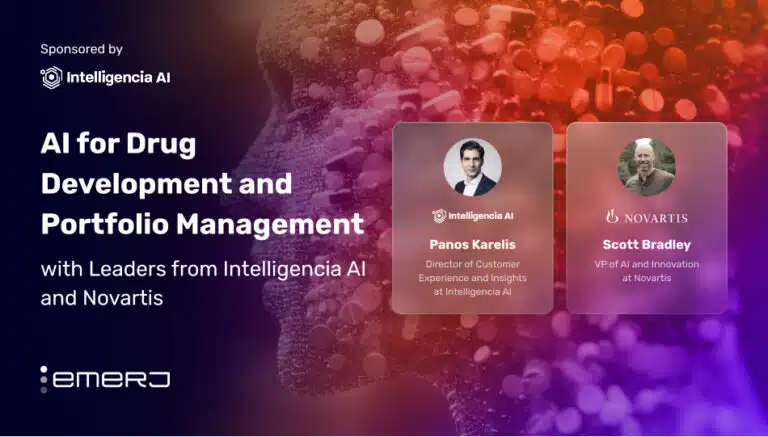As one of the largest healthcare companies in the United States, CVS Health generated $357.8 billion in revenue in 2023 and serves over 100 million people annually across its insurance, retail, and pharmacy operations. With such an expansive footprint, the company’s internal application of AI is critical not only to improve operational efficiency but also to deliver more personalized care and public health services at scale.
CVS Health has consistently stated its commitment to integrating data science and AI into the core of its business operations. In particular, the company positions AI as a key driver for improving patient outcomes and reducing friction across its pharmacy and clinical workflows. In recent years, this has included leveraging AI for personalization in medication support programs and deploying augmented intelligence tools to support national testing and vaccine distribution efforts.
The following sections explore how CVS Health deploys AI effectively across two core business areas:
- Personalizing pharmaceutical workflows for improved patient outcomes: Machine learning models can analyze patient behavior and prescription data to enable tailored outreach strategies that will enhance medication adherence and streamline pharmacy workflows.
- Augmented intelligence to streamline testing and vaccine delivery: AI-driven forecasting tools help optimize staffing and resource allocation for public health efforts, enhancing responsiveness during nationwide testing and vaccination campaigns.
Personalizing Pharmaceutical Workflows for Improved Patient Outcomes
CVS Health leverages AI to address a long-standing challenge in healthcare: medication non-adherence. Patients often fail to take prescriptions as directed, which has serious consequences.
A 2018 peer-reviewed study published in Risk Management and Healthcare Policy estimated that non-adherence costs the U.S. healthcare system approximately $528.4 billion annually, with per-patient costs ranging from $5,271 to over $52,000 per year.
Additionally, a World Health Organization report found that only about 50% of patients with chronic illnesses in developed countries follow their prescribed treatment regimens. These figures illustrate the magnitude of the business problem and underscore the opportunity for AI-driven personalization to improve both outcomes and cost efficiency.
To target this issue, CVS Health implemented a personalization engine using the Databricks Lakehouse platform. The system is powered by machine learning models that analyze a broad range of patient data, including:
- Prescription history
- Insurance claims
- Health conditions
- Demographics
- Real-time pharmacy interactions
The Databricks use case documentation asserts directly that the model then predicts the specific needs and behavioral patterns of each patient to determine which type of support will be most effective.
A brief portion of the video below on the wider partnership between Databricks, CVS, and Azure on these systems discusses the focus on customer behaviors and experiences throughout the development process:
Rather than offering uniform reminders, the AI system enables CVS to deliver tailored communications — ranging from automated texts to pharmacist-led phone calls — that match the patient’s preferences and predicted responsiveness. For example:
- Some patients may receive refill reminders aligned with their typical pickup behavior.
- Others may be flagged for intervention if they consistently delay prescriptions for chronic conditions.
In this way, CVS aims to match the intensity and type of outreach to the actual risk level and communication preferences of the individual patient.
The use case is well-integrated into core pharmacy workflows, as CVS claims it is actively using this system to power its omnichannel pharmacy experience across digital, in-store, and mobile platforms.
While CVS has not released detailed outcome metrics, the company claims that its AI-driven personalization tools have helped improve patient adherence and automate pharmacist outreach, thereby reducing the manual burden on clinical teams.
According to Databricks, the system has led to a 1.6% improvement in adherence rates among patients. Though modest at first glance, even minor improvements are significant when applied across CVS’s national pharmacy footprint, especially given that non-adherence is estimated to cost the U.S. healthcare system $528.4 billion annually. These measurable improvements illustrate how targeted interventions at scale can have a significant financial and clinical impact.
The model’s effectiveness stems from its ability to unify siloed data sources and focus on near-term behavioral patterns—not just static demographic profiles. Unifying silos provides care teams with a clearer view of which patients are at risk and how best to support them without wasting time or resources on one-size-fits-all interventions.
Augmented Intelligence to Streamline Testing and Vaccine Delivery
During the COVID-19 pandemic, CVS Health was tasked with rapidly scaling testing and vaccination services across thousands of retail and clinical locations in the U.S. The company expanded from an initial 50 sites in five states to nearly 1,000 drive-through testing locations nationwide by the end of May 2020.
To manage the complexity of this national rollout, the company adopted an augmented intelligence platform built on DataRobot.
A brief video from Data Robot spells out various challenges across the early phases of the project from gaining public trust to direct leadership communications:
The platform’s primary function was to generate demand forecasts and staffing plans that could adapt to local conditions. These AI models drew from multiple internal and external data sources, including:
- CDC infection rate forecasts
- State and federal testing mandates
- Local appointment trends
- Workforce availability
- Inventory and supply chain signals
By aggregating these inputs, the AI system produced recommendations for optimal site staffing, testing kit distribution, and vaccine inventory planning — all of which were updated dynamically as new data became available.
These recommendations for customers allowed CVS to:
- Predict demand fluctuations at each location down to the day.
- Allocate mobile testing units or additional staff in high-need areas.
- Reduce wait times and avoid over- or under-supplying sites with critical materials.

Overview of vaccine cold-chain logistics—from storage to administration. (Source: PAHO/WHO)
Unlike standard forecasting models, which often rely on rigid historical baselines, CVS’s AI approach enabled proactive adjustments. The system’s augmented intelligence design also ensured that human experts remained in the loop—using AI-generated scenarios as decision support tools, not replacements for local clinical judgment.
CVS Health reports that this AI-enabled approach was instrumental in executing more than 29 million COVID-19 tests and 59 million vaccine doses across the U.S., according to DataRobot documentation. The company continues to invest in the same forecasting capabilities to support future public health campaigns and seasonal surges in demand, such as flu vaccinations.
The scale of this deployment — spanning over 10,000 retail locations — underscores the logistical complexity that AI helped manage during a critical period of national response. While CVS has not disclosed precise ROI metrics, the ability to dynamically match staff and supply levels to shifting local demand helped ensure resource availability and improved operational efficiency.
The system’s augmented intelligence framework enabled human leaders to maintain control while benefiting from AI-generated planning scenarios, which CVS has since expanded to support seasonal vaccination surges.



















